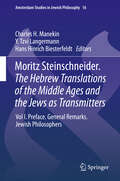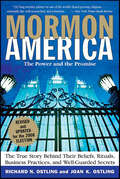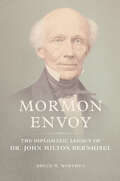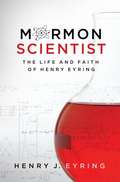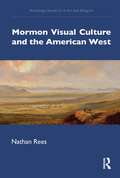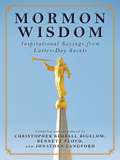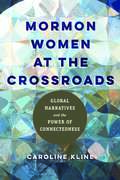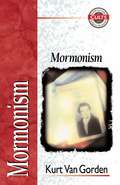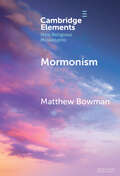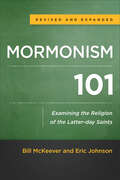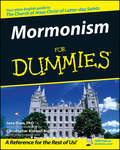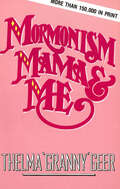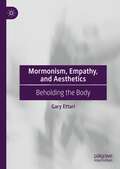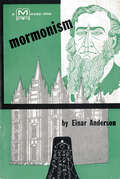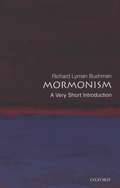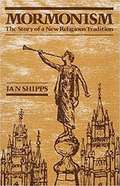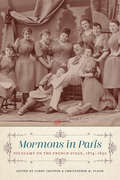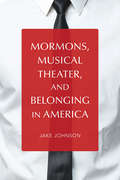- Table View
- List View
Moritz Steinschneider. The Hebrew Translations of the Middle Ages and the Jews as Transmitters
by Charles H. Manekin Y. Tzvi Langermann Hans Hinrich BiesterfeldtThis book deals with medieval Jewish authors who wrote in Arabic, such as Moses Maimonides, Judah Halevi, and Solomon Ibn Gabirol, as well as the Hebrew translations and commentaries of Judaeo-Arabic philosophy. It brings up to date a part of Moritz Steinschneider's monumental Die hebraeischen Uebersetzungen des Mittelalters und die Juden als Dolmetscher (The Hebrew Translations of the Middle Ages and the Jews as Transmitters), which was first published in 1893 and remains to this day the authoritative account of the transmission and development of Arabic and Latin, and, by way of those languages, Greek culture to medieval and renaissance Jews. In the work presented here, Steinschneider's bibliography has been updated, some of his scholarly judgments have been judiciously revised and an exhaustive listing of pertinent Hebrew manuscripts and their whereabouts has been provided. The volume opens with a long essay that describes the origin and genesis of Die Hebraeischen Übersetzungen, and with Steinschneider's prefaces to the French and German versions of his work. This publication is the first in a projected series that translates, updates and, where necessary, revises parts of Steinschneider's bio-bibliographical classic. Historians of medieval culture and philosophy, and also scholars of the transmission of classical culture to Muslims, Christians, and Jews, will find this volume indispensable.
Moritz Steinschneider. The Hebrew Translations of the Middle Ages and the Jews as Transmitters: Vol II. General Works. Logic. Christian Philosophers (Amsterdam Studies in Jewish Philosophy #18)
by Charles H. Manekin Hans Hinrich BiesterfeldtThis book surveys Hebrew manuscripts of Aristotelian philosophy and logic. It presents a translation and revision of part of Moritz Steinschneider’s monumental Die Hebraeischen Übersetzungen des Mittelalters und die Juden als Dolmetscher (The Hebrew Translations of the Middle Ages and the Jews as Interpreters). This resource was first published in 1893. It remains to this day the authoritative account of the transmission and development of Arabic and Latin, and, by way of those languages, Greek culture to medieval and renaissance Jews. The editors have updated Steinschneider’s bibliography. They have also judiciously revised some of his scholarly judgments. In addition, the volume provides an exhaustive listing of pertinent Hebrew manuscripts and their whereabouts. The section on logic, including texts hitherto unknown, represents the latest research in the history of medieval logic in Hebrew. This publication is the second in a series of volumes that translates, updates, and, where necessary, revises parts of Steinschneider’s bio-bibliographical classic work on Hebrew manuscripts of philosophical encyclopedias, manuals, and logical writings. Historians of medieval culture and philosophy, and also scholars of the transmission of classical culture to Muslims, Christians, and Jews, will find this volume indispensable.
Mormon America: The Power and the Promise
by Richard Ostling Joan K. OstlingWho Are the Mormons?The Church of Jesus Christ of Latter-day Saints:Has over 12.5 million members worldwide and is one of the fastest-growing and most centrally controlled U.S.-based religionsIs by far the richest religion in the United States per capita, with $25 to $30 billion in estimated assets and $5 to $6 billion more in estimated annual incomeBoasts such influential members as Senate Majority Leader Harry Reid and presidential candidate Mitt Romney
Mormon Envoy: The Diplomatic Legacy of Dr. John Milton Bernhisel
by Bruce W. WorthenFor more than twenty years, John Milton Bernhisel negotiated with the federal government on behalf of the Church of Jesus Christ of Latter-day Saints. Bruce W. Worthen illuminates the life and work of the man whose diplomacy steered the Church’s relationship with Washington, D.C. from its early period of dangerous conflict to a peaceful and pragmatic coexistence. Having risen from a Pennsylvania backcountry upbringing to become a respected member of the upper class, Bernhisel possessed a personal history that allowed him to reach common ground with politicians and other outsiders. He negotiated for Joseph Smith’s life and, after the Church’s relocation to the Utah Territory, took on the task of rehabilitating the public image of the Latter-day Saints. Brigham Young’s defiance of the government undermined Bernhisel’s work, but their close if sometimes turbulent relationship ultimately allowed Bernhisel to make peace with Washington, secure a presidential pardon for Young, and put Utah and the Latter-day Saints on the road to formally joining the United States.
Mormon Scientist: The Life and Faith of Henry Eyring
by Henry J. EyringThe lesson of Henry Eyring's life is that simple people, people just like you and me, can change the world. You do it every day, even without recognizing it. And you have the potential to change the world much more if only you can understand and use the gifts you have been given." --From the introduction by Steven M. Kuznicki Henry Eyring was one of the preeminent scientists of his era--no mean feat when you consider that his era included the likes of Einstein and Heisenberg. He was also a believing and practicing Latter-day Saint, an apparent contradiction that Henry mastered with surprising ease. To Henry, science and religion were not opposites--they were part of one unified picture that God would ultimately reveal. As a scientist, and as a man of faith, he worked at discovering the missing puzzle pieces that would make the picture complete. This engaging biography tells the story of a boy born on a ranch in the Mormon colonies of northern Mexico who attained the heights of scientific achievement, ultimately publishing more than 600 papers and leading the world's largest scientific societies. It is also the story of the family legacy that produced Henry Eyring--of the faith and sacrifice of his forebears that made his education and scientific achievements possible and laid the foundations of his own unshakable faith. Above all, this is the story of a scientist whose religious faith helped him find simple truths in a complex world. It is a legacy we can share as we learn from his experiences and apply his insights.
Mormon Visual Culture and the American West (Routledge Research in Art and Religion)
by Nathan ReesThis book explores the place of art in Latter-day Saint society during the first 50 years of the Utah settlement, beginning in 1847. Nathan Rees uncovers the critical role that images played in nineteenth-century Mormon religion, politics, and social practice. These artists not only represented, but actively participated in debates about theology, politics, race, gender, and sexuality at a time when Latter-day Saints were grappling with evolving doctrine, conflict with Native Americans, and political turmoil resulting from their practice of polygamy. The book makes an important contribution to art history, Mormon studies, American studies, and religious studies.
Mormon Wisdom: Inspirational Sayings from Latter-Day Saints
by Christopher Kimball Bigelow Bennett Floyd Jonathan LangfordMormonism has only been around for less than two hundred years, but it has a large following in the United States. While their practices may be slightly different from mainstream Christianity, their fundamental desire to live as close to the life of Christ and preach faith is the same. Mormon Wisdom is a collection of inspiration quotes from prominent leaders of the Church of Latter-day Saints, designed to enlighten, inspire, and motivate the reader. Mormon Wisdom is a treasure for spiritual seekers or anyone who needs a bit of inspiration every now and then. Here are a few examples: The earth is a living creature and breathes as much as you and I do. God rarely moves the mountains in front of us but He always helps us climb them. By becoming the answer to someone’s prayer, we often find the answers to our own. To be cheerful when others are in despair, to keep the faith when others falter, to be true even when we feel forsaken--all of these are deeply desired outcomes during the deliberate, divine tutorials which God gives to us--because He loves us.
Mormon Women at the Crossroads: Global Narratives and the Power of Connectedness
by Caroline KlineThe Church of Jesus Christ of Latter-day Saints continues to contend with longstanding tensions surrounding gender and race. Yet women of color in the United States and across the Global South adopt and adapt the faith to their contexts, many sharing the high level of satisfaction expressed by Latter-day Saints in general. Caroline Kline explores the ways Latter-day Saint women of color in Mexico, Botswana, and the United States navigate gender norms, but also how their moral priorities and actions challenge Western feminist assumptions. Kline analyzes these traditional religious women through non-oppressive connectedness, a worldview that blends elements of female empowerment and liberation with a broader focus on fostering positive and productive relationships in different realms. Even as members of a patriarchal institution, the women feel a sense of liberation that empowers them to work against oppression and against alienation from both God and other human beings. Vivid and groundbreaking, Mormon Women at the Crossroads merges interviews with theory to offer a rare discussion of Latter-day Saint women from a global perspective.
Mormonism
by Alan W. Gomes Kurt Van GordenWith their strong emphasis on traditional family values, education, discipline, and service, Mormons sound and look more "Christian" than many believers. At first glance, there seems to be little to criticize in what they say or do. But peel back the façade, and you find a cult with its roots in immorality and heresy. The story of the Mormon Church is one of in-fighting, racism, polygamy, and violence. Often, even the members of the group don’t know the full truth about either the history or the teachings of this fast-growing church. -- Why this series? This is an age when countless groups and movements, old and new, mark the religious landscape in our culture, leaving many people confused or uncertain in their search for spiritual truth and meaning. Because few people have the time or opportunity to research these movements fully, these books provide essential information and insights for their spiritual journeys. Each book has five sections: - A concise introduction to the group - An overview of the group's theology--in its own words - Tips for witnessing effectively to members of the group - A bibliography with sources for further study - A comparison chart that shows the essential differences between biblical Christianity and the group -- The writers of these volumes are well qualified to present clear and reliable information and help us discern religious truth from falsehood.
Mormonism (Elements in New Religious Movements)
by Matthew BowmanThis Element will focus on the various denominations in the Mormon tradition, collectively sometimes referred to as 'Mormonism.' They include the Church of Jesus Christ of Latter-day Saints as well as the several sects of Mormon fundamentalism and multiple other denominations. Often described as the quintessential new religious movement, Mormonism is useful for studying the dynamics of new religious formation, evolution, schism, and adaptation to American culture more broadly. It emerged in the heat of the Second Great Awakening, the flourishing of religious creativity and innovation that followed American disestablishment, inspired by the visionary ideas of Joseph Smith, Jr., a New York farmer who adopted a particular style of restorationism, a form of Christianity popular in the period. Since that time, the various branches of Mormonism have embraced different relationships with the broader stream of American culture. Some have sought integration with America's Protestant majority; others have emphasized sectarian distinctiveness.
Mormonism 101: Examining The Religion of the Latter-day Saints
by Bill McKeever and Eric JohnsonExtensively updated, this proven resource helps Christians understand the differences between Mormon belief and orthodox Christianity, equipping believers to minister to their Mormon friends and neighbors.
Mormonism For Dummies
by Jana Riess Christopher Kimball BigelowGet the facts on temples, tithing, missions, and caffeine Mormon doctrines, rituals, and history, demystified at last! Mormonism, or the LDS Church, is one of the world's fastest growing religions. But unless you were raised a Mormon, you probably don't have a clear picture of LDS beliefs and practices. Covering everything from Joseph Smith and the Book of Mormon to tithing and family home evening, this friendly guide will get you up to speed in no time. Discover: * How the LDS Church differs from other Christian churches * What Mormons believe * What happens in Mormon temples and meetinghouses * The history of the LDS Church * LDS debates on race, women, and polygamy
Mormonism For Dummies
by Jana Riess Christopher Kimball BigelowExplore one of the fastest-growing religions in the world The Church of Jesus Christ of Latter-Day Saints is the first Christian faith to be developed in America, and today the Church is home to millions—both inside and outside the United States. Mormonism For Dummies, 2nd Edition is a valuable tool for individuals interested in learning more about the beliefs and practices of the widely-practiced Latter-day Saint faith. In this informative book, you'll explore the different denominations of the Church, recent changes to the Church's customs and practices'which also covers why the Church encourages a shift away from the term “Mormon” and more. Inside, you'll: Discover the history and origins of the Church of Latter-Day Saints Understand the Church's official stances on areas, including race, the status of women, and polygamy Examine subjects like religious fundamentalism and orthodoxy through the lens of practicing LDS members A must-read for anyone interested in the rituals, customs, beliefs, and politics of the Church of Latter-Day Saints, Mormonism For Dummies, 2nd Edition gives you the straightforward and unbiased info you need to understand this nuanced faith.
Mormonism Mama And Me
by Thelma GeerRaised in the Mormon church, she dreamed of becoming a 'heavenly queen.' A personal account of one woman's Mormon heritage and her conversion to the Christian faith. Examines several important tenets of the Mormon faith.
Mormonism Mama And Me
by Thelma GeerRaised in the Mormon church, she dreamed of becoming a 'heavenly queen.' A personal account of one woman's Mormon heritage and her conversion to the Christian faith. Examines several important tenets of the Mormon faith.
Mormonism Unmasked: Confronting The Contradictions Between Mormonism Beliefs And True Christianity
by R. Philip RobertsMormons tend to be model citizens-friendly, honest, hopeful, kind-everything that should be expected from a Christian. But, as this book points out, the Mormons aren't Christian at all. The Church of Jesus Christ Of Latter-Day Saints is an an extremely powerful and influential religious organization, reaching hundreds of millions of people worldwide. Unfortunately, what the Mormons are propagating is a false god, false Jesus, and false gospel. This incisive book clearly explains the Mormons' basic beliefs and sharply refutes their subtle heresies. After walking the reader through the Mormons' evangelistic techniques and strategies, the book gives Christians easy-to-use guidance on witnessing to Mormons, so they can effectively and lovingly defend the true Christian faith.
Mormonism and American Politics (Religion, Culture, and Public Life #18)
by Jana Balmer Randall RiessWhen Joseph Smith ran for president as a radical protest candidate in 1844, Mormons were a deeply distrusted group in American society, and their efforts to enter public life were met with derision. When Mitt Romney ran for president as a Republican in 2008 and 2012, the public had come to regard Mormons as consummate Americans: patriotic, family-oriented, and conservative. How did this shift occur?In this collection, prominent scholars of Mormonism, including Claudia L. Bushman, Richard Lyman Bushman, Jan Shipps, and Philip L. Barlow, follow the religion's quest for legitimacy in the United States and its intersection with American politics. From Brigham Young's skirmishes with the federal government over polygamy to the Mormon involvement in California's Proposition 8, contributors combine sociology, political science, race and gender studies, and popular culture to track Mormonism's rapid integration into American life. The book takes a broad view of the religion's history, considering its treatment of women and African Americans and its portrayal in popular culture and the media. With essays from both Mormon and non-Mormon scholars, this anthology tells a big-picture story of a small sect that became a major player in American politics.
Mormonism and Violence: The Battles of Zion (Elements in Religion and Violence)
by Patrick Q. MasonIn popular culture and scholarship, a consistent trope about Mormonism is that it features a propensity for violence, born of the religion's theocratic impulses and the antinomian tendencies of special revelation. Mormonism and Violence critically assesses the relationship of Mormonism and violence through a close examination of Mormon history and scripture, focusing on the Church of Jesus Christ of Latter-day Saints. The Element pays special attention to violence in the Book of Mormon and the history of the movement, from the 1830s to the present.
Mormonism, Empathy, and Aesthetics: Beholding the Body
by Gary EttariThis book analyzes the role that the physical body plays in foundational Mormon doctrine, and claims that such an analysis reveals a model of empathy that has significant implications for the field of Mormon aesthetics. This volume achieves three main goals: It elucidates the Mormonism's relationship with the body, it illuminates Mormonism’s traditional approaches to understanding and appreciating art, and it suggests that the body as Mormonism conceives of it allows for the employment of an aesthetic framework rooted in bodily empathy rather than traditional Christian or Mormon moral values per se. In support of this argument, several chapters of the book apply Mormonism’s theology of the body to paintings and poems by contemporary Mormon artists and writers. An examination of those works reveals that the seeds of a new Mormon aesthetic are germinating, but have yet to significantly shift traditional Mormon thought regarding the role and function of art.
Mormonism: A Personal Testimony
by Einar AndersonA converted Mormon relates his experience as the Holy Spirit guided him into his newfound faith in Christ.
Mormonism: A Very Short Introduction
by Richard Lyman BushmanBeginning with a handful of members in 1830, the church that Joseph Smith founded has grown into a world-wide organization with over 12 million adherents, playing prominent roles in politics, sports, entertainment, and business. Yet they are an oddity. They are considered wholesome, conservative, and friendly on one hand, and clannish, weird, and self-righteous on the other. Mormonism: A Very Short Introduction explains who Mormons are: what they believe and how they live their lives. Written by Richard Lyman Bushman, an eminent historian and practicing Mormon, this compact, informative volume ranges from the history of the Church of Jesus Christ of Latter-day Saints to the contentious issues of contemporary Mormonism. Bushman argues that Joseph Smith still serves as the Mormons' Moses. Their everyday religious lives are still rooted in his conceptions of true Christianity. They seek revelation to solve life's problems just as he did. They believe the authority to seal families together for eternity was restored through him. They understand their lives as part of a spiritual journey that started in a "council in heaven" before the world began just as he taught. Bushman's account also describes the tensions and sorrows of Mormon life. How are Mormons to hold on to their children in a world of declining moral standards and rampant disbelief? How do rational, educated Mormons stand up to criticisms of their faith? How do single Mormons fare in a church that emphasizes family life? The book also examines polygamy, the various Mormon scriptures, and the renegade fundamentalists who tarnish the LDS image when in fact they're not members. In a time when Mormons such as Mitt Romney and Harry Reid are playing prominent roles in American society, this engaging introduction enables readers to judge for themselves how Mormon teachings shape the character of believers.
Mormonism: The Basics (The Basics)
by John Charles Duffy David J HowlettAlthough often regarded as marginal or obscure, Mormonism is a significant American religious minority, numerically and politically. The successes and struggles of this U.S. born religion reveal much about how religion operates in U.S. society. Mormonism: The Basics introduces the teachings, practices, evolution, and internal diversity of this movement, whose cultural icons range from Mitt Romney to the Twilight saga, from young male missionaries in white shirts and ties to polygamous women in pastel prairie dresses. This is the first introductory text on Mormonism that tracks not only the mainstream LDS but also two other streams within the movement—the liberalized RLDS and the polygamous Fundamentalists—thus showing how Mormons have pursued different approaches to defining their identity and their place in society. The book addresses these questions. Are Mormons Christian, and why does it matter? How have Mormons worked out their relationship to the state? How have Mormons diverged in their thinking about gender and sexuality? How do rituals and regulations shape Mormon lives? What types of sacred spaces have Mormons created? What strategies have Mormons pursued to establish a global presence? Mormonism: The Basics is an ideal introduction for anyone wanting to understand this religion within its primarily American but increasingly globalized contexts.
Mormonism: The Story Of A New Religious Tradition
by Jan Shipps"Without fully and consciously realizing that they were doing so, the followers of Jesus established a new religious tradition. This book tells the story of yet another assembly of saints whose history, I believe, is in many respects analogous to the history of those early Christians who thought at first that they had found the only proper way to be Jews. Mormonism started to grow away from traditional Christianity almost immediately upon coming into existence. It began as a movement that understood itself as Christian, but. . . these nineteenth-century Latter-day Saints (as they came to be called) embarked on a path that led to developments that now distinguish their tradition from the Christian tradition as surely as early Christianity was distinguished from its Hebraic context."--From the preface
Mormons in Paris: Polygamy on the French Stage, 1874-1892 (Scènes francophones: Studies in French and Francophone Theater)
by Corry Cropper and Christopher M. FloodIn the late nineteenth century, numerous French plays, novels, cartoons, and works of art focused on Mormons. Unlike American authors who portrayed Mormons as malevolent “others,” however, French dramatists used Mormonism to point out hypocrisy in their own culture. Aren't Mormon women, because of their numbers in a household, more liberated than French women who can't divorce? What is polygamy but another name for multiple mistresses? This new critical edition presents translations of four musical comedies staged or published in France in the late 1800s: Mormons in Paris (1874), Berthelier Meets the Mormons (1875), Japheth’s Twelve Wives (1890), and Stephana’s Jewel (1892). Each is accompanied by a short contextualizing introduction with details about the music, playwrights, and staging. Humorous and largely unknown, these plays use Mormonism to explore and mock changing French mentalities during the Third Republic, lampooning shifting attitudes and evolving laws about marriage, divorce, and gender roles. Published by Bucknell University Press. Distributed worldwide by Rutgers University Press.
Mormons, Musical Theater, and Belonging in America (Music in American Life)
by Jake JohnsonThe Church of Jesus Christ of Latter-day Saints adopted the vocal and theatrical traditions of American musical theater as important theological tenets. As Church membership grew, leaders saw how the genre could help define the faith and wove musical theater into many aspects of Mormon life. Jake Johnson merges the study of belonging in America with scholarship on voice and popular music to explore the surprising yet profound link between two quintessentially American institutions. Throughout the twentieth and twenty-first centuries, Mormons gravitated toward musicals as a common platform for transmitting political and theological ideas. Johnson sees Mormons using musical theater as a medium for theology of voice--a religious practice that suggests how vicariously voicing another person can bring one closer to godliness. This sounding, Johnson suggests, created new opportunities for living. Voice and the musical theater tradition provided a site for Mormons to negotiate their way into middle-class respectability. At the same time, musical theater became a unique expressive tool of Mormon culture.
